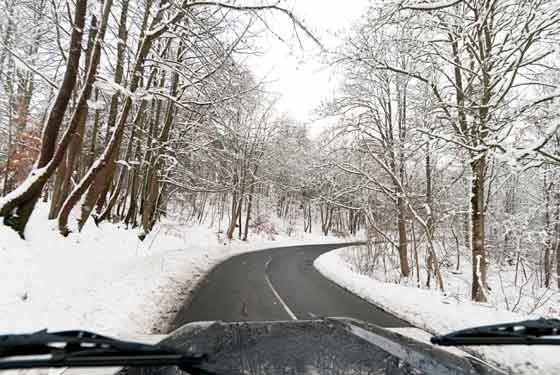For new drivers, winter motoring conditions can be a tough challenge. Shorter daylight hours, low temperatures and the possibility of sleet, snow and icy conditions can affect both visibility and road handling while driving. Over the last few years the UK has been taken by surprise by heavy snow during the winter months; being prepared for extreme weather is becoming a reality. Please drive safely this winter.
First and foremost, if circumstances are too dangerous: cancel your journey. This may be inconvenient, but with 18,000 road accidents caused by snow and ice in the UK last year [1], driving in extreme conditions just isn’t worth the risk. If you do have to drive in the snow, listen to travel news and weather on local radio stations to stay informed of any incidents or changes to the weather you may encounter.
Before starting your journey test your lights, including your headlights, side lights and brake lights. To test your headlights and sidelights switch them on and get out of the car to check they are working. Testing brake lights is easier if you have a passenger who can check from behind the car as you apply your foot to the brake pedal. If you are driving by yourself, reverse your vehicle close to a wall and apply the brakes, checking for a reflection of the lights.
Make sure that your tyre tread depth does not fall below legal minimum, tyre pressure should be kept at the manufacturer’s recommended level; always check tyre pressure before starting a journey when the tyres are cool. Testing your brakes at the beginning of a drive is a good idea, at a safe moment, push gently on the brake pedal. If your brakes do not respond as they should, you should cancel your journey until they have been serviced. Fully responsive brakes while driving in conditions which could affect your road handling are exceptionally important for safety.
Being aware of and adhering to advice regarding longer stopping distances is essential for safe driving in wintery conditions. In wet weather, stopping distances will at least double; in snow and ice, stopping distances can be ten times greater than usual [2], so be sure to stay well back from the driver in front and keep your speed down on icy roads.
The highway code recommends driving at a slow speed in as high a gear as possible in winter weather to maintain control of your vehicle [3]. If you feel your car starting to skid, ease gently off the accelerator and turn the steering wheel in the direction of the skid to regain control.
For new drivers without experience of driving in winter conditions, the Pass Plus test is a good way to learn practical driving skills which may not have already been covered. Pass Plus is made up of six modules including ‘All weather driving’ and ‘driving at night’; taking these additional driving lessons after passing your test will help you to become a safer and more confident motorist.

